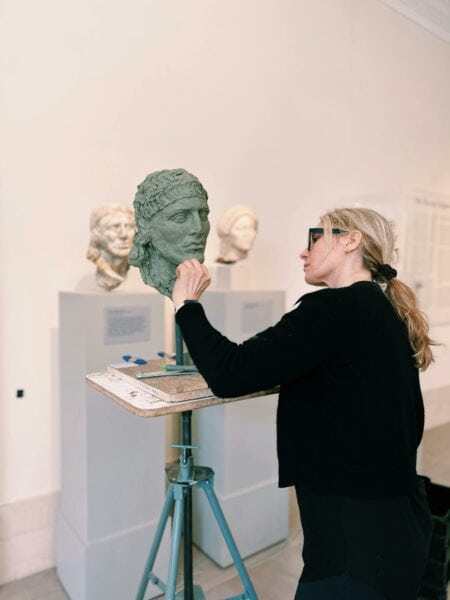
The Art of Sculpting Your Story
You know that feeling when you look at a beautiful sculpture and wonder how the artist saw it hiding in that block of marble, or piece of wood? Well, editing your memoir isn’t so different. Just as Michelangelo claimed his sculptures already existed within the stone, your story is already there in your first draft – it just needs some careful sculpting to emerge.
This week, as part of my Year Long Memoir Writing Course, I gave a workshop on editing your memoir. Here’s an abridged version!
Every writer’s process is different, so hold what I say lightly. But most memoirists need to write several drafts and each one involves a different type of editing. As memoirist Dani Shapiro wisely notes, “Memory is not a fixed thing. Each draft brings new understanding.” This is why the editing process is less about grammar-hunting and more about discovery. Think of it as a series of gentle passes, each one revealing more of your story’s true shape.
Start with a splurge draft – get it all out there! It might be really messy, that’s fine. As Jordan Peele says, “When I’m writing the first draft, I’m constantly reminding myself that I’m simply shoveling sand into a box, so that later I can build castles.”
Or it might not be. I work with plenty of memoirists who write their books in their heads before they commit them to page. They do a lot of processing that sees their drafts come out fairly clean and tidy. Every writer is different! But however, you get that first draft down – get it down. Create that block of marble. Then the development – or actual sculpting – begins. Give yourself the gift of time between revisions. Print it out. Double-spaced is your friend, so you can make notes. And maybe in a different font to the one you wrote it in, so it looks “new” to you. And grab that red pen. Enjoy and luxuriate in the process. This is the gift of transformation that memoir gives us – new perspective, fresh insight. This is the CRAFT of writing. Don’t rush to produce. As Patricia Hampl beautifully puts it, “Revision is not just cleaning up after the party, but often the party itself.”
In your second pass, focus on development. This is where you might add research, fact-check, and remove anything that doesn’t feel quite right. I gave my students a list of ten things to consider at this stage from writing in scenes, finding your (main character and narrator) voice, dialogue to transitions, the three essential types of writing that memoir needs, theme and everything in between. Much of this you might have done instinctively in your first draft.
If all this sounds a bit baffling, my six-part video course can help.
The third draft is all about rhythm and flow – read it aloud, you’ll be amazed what your ears catch that your eyes miss! Maybe look at legal issues such as libel and privacy at this stage.
By the fourth draft, you’re ready to start a final polish. Maybe you’ll go to a fifth draft. There’s no prescription and it takes the time it takes with life often getting in the way at times. Just keep going as best you can. And you can’t read too many memoirs as you go along, either. That’s my topist top-tip!
Remember William Zinsser’s golden rule: “Be honest, be selective, be specific. Your job is to tell the truth as you remember it, but to tell it with craft and art.” Because in the end, editing isn’t about perfection – it’s about sculpting your memories into a story that rings true, both to your experience and to what it means to you now.
